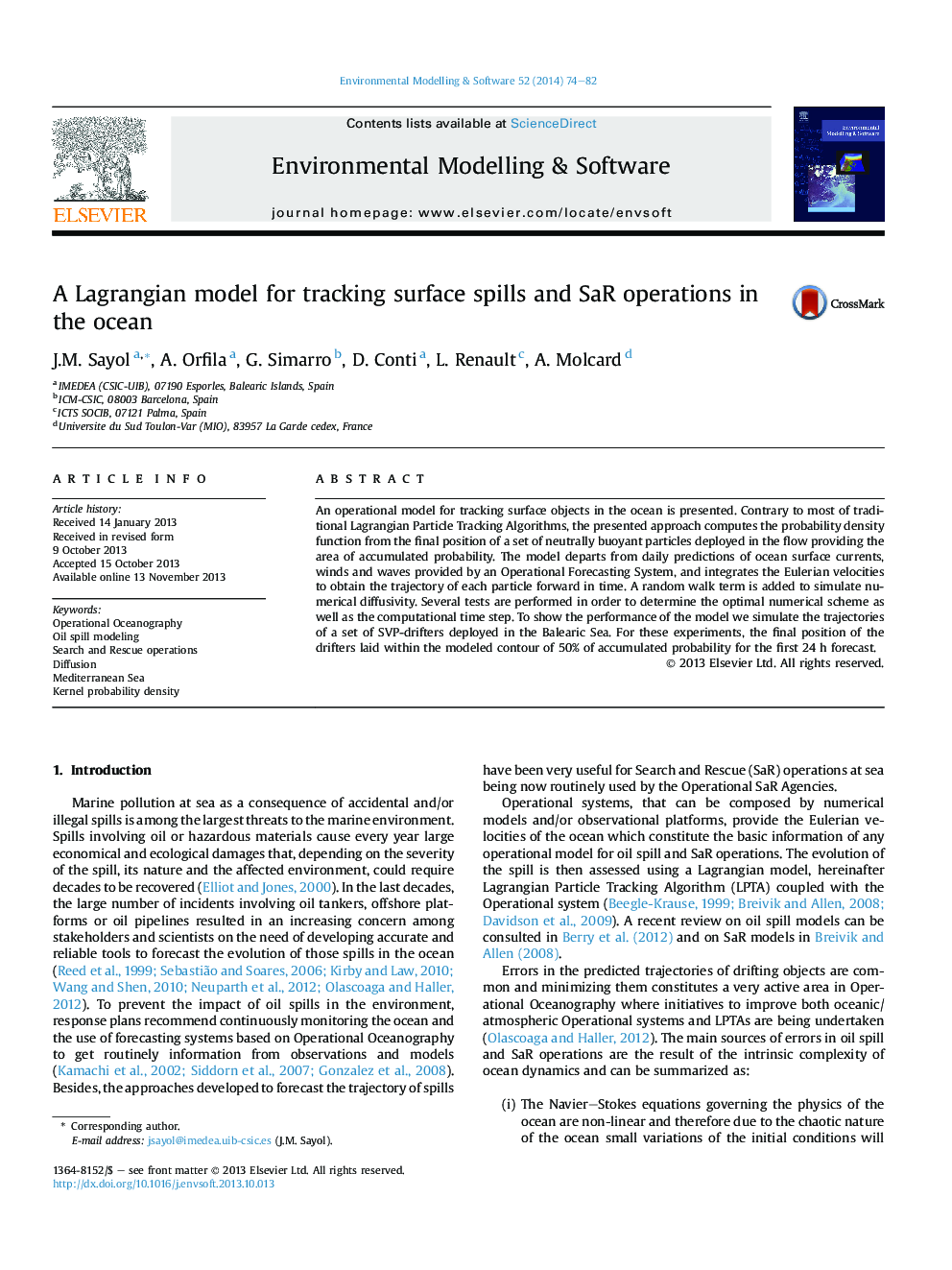| Article ID | Journal | Published Year | Pages | File Type |
|---|---|---|---|---|
| 6963999 | Environmental Modelling & Software | 2014 | 9 Pages |
Abstract
An operational model for tracking surface objects in the ocean is presented. Contrary to most of traditional Lagrangian Particle Tracking Algorithms, the presented approach computes the probability density function from the final position of a set of neutrally buoyant particles deployed in the flow providing the area of accumulated probability. The model departs from daily predictions of ocean surface currents, winds and waves provided by an Operational Forecasting System, and integrates the Eulerian velocities to obtain the trajectory of each particle forward in time. A random walk term is added to simulate numerical diffusivity. Several tests are performed in order to determine the optimal numerical scheme as well as the computational time step. To show the performance of the model we simulate the trajectories of a set of SVP-drifters deployed in the Balearic Sea. For these experiments, the final position of the drifters laid within the modeled contour of 50% of accumulated probability for the first 24Â h forecast.
Related Topics
Physical Sciences and Engineering
Computer Science
Software
Authors
J.M. Sayol, A. Orfila, G. Simarro, D. Conti, L. Renault, A. Molcard,
